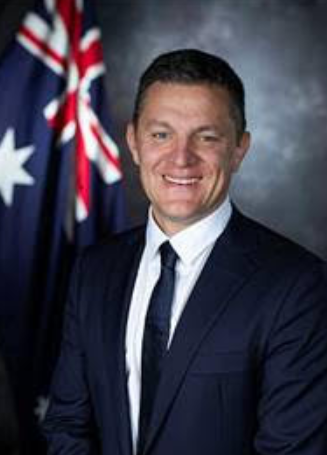Defence is working to inspire young minds with the wonders of science, technology, engineering and maths (STEM) and encourage children, adolescents and adults from all backgrounds to pursue STEM careers. The pipeline of STEM professionals is notoriously slippery, with students and young professionals falling away as their circumstances change or the study burden becomes too onerous.
Dr Mark Bazzacco, Chief Research Technology and Operations of the Defence Science and Technology Group (DSTG), says it was essential to open the STEM door to the widest diversity of Australians possible.
“We know right now we’re not seeing the representation of the Australian population reflected in the population coming through,” Dr Bazzacco says, adding there is practical work underway to encourage children and young adults to choose and persevere with STEM.
“We would love to have a greater pool of STEM professionals, with not just diversity of discipline but diversity of experience and perspectives. We know from the data that we need to inspire young minds and primary-school age kids to think about subject selection.”
Last year, Defence and Questacon, Australia’s national science and technology centre in Canberra, launched a five-year, $18m partnership designed to give more than 1500 teachers the confidence and skills to integrate STEM workshops into their curriculums and inspire Australia’s coming generations of STEM professionals.
This extension of the Engineering is Elementary program means primary school students will continue to design submersibles, parachutes, water filters and bridges.
A little further down the track, adolescents are catered for with an extensive range of Year 10 Defence work experience programs, including an overnight placement at HMAS Cerberus southeast of Melbourne, a day in the life of a soldier with 13 Brigade at Irwin Barracks in Perth, a three-day Navy Aviation introduction at HMAS Albatross in Nowra, NSW, and an Air Force familiarisation program at RAAF Darwin.
“High school students, we absolutely need them thinking about choosing the right subjects and getting the base knowledge to think about what they need for a STEM degree,” Dr Bazzacco says.
For those studying STEM at university, Defence works in partnership with the Australian Academy of Technological Sciences and Engineering to address gender equities in STEM by providing undergraduate and postgraduate research scholarships and leadership support for women and non-binary people.
“We’re trying to get students to cross the bridge to the workplace before they’ve even finished their degrees, look at the options and the environment and say, ‘Hey, this is somewhere I can see myself’,” Dr Bazzacco says, adding that the right kind of working environment was essential to encourage recruits from diverse backgrounds.
“When a woman comes into a workplace, or someone from a remote area, or a First Nations person joins an organisation, we need to make sure that the minute they walk into that environment, they’re feeling supported, they’re in a psychologically safe environment – and when they look around they can see and hear people like them.”
Defence offers a STEM cadetship program which provides an entry-level employment pathway for high-performing STEM undergraduate students. The program includes some financial support for the cadets as well as experience working with experts in their given field, work which might encompass developing new intelligence, surveillance and reconnaissance capabilities, or new weapon platforms, or work on cyber security.
Older mid-career STEM specialist recruits might look to the Defence NAVIGATE program which provides two six-month placements in different science and technology areas within the department. The placements include training, mentoring and leadership development opportunities, as well as an ongoing role in Defence at the end of the program.
NAVIGATE’s 50 per cent women target is this year on track to be surpassed, with an intake of 54 per cent women, Dr Bazzacco says.
“There’s a lot of debate around the effectiveness of targets. You need to disrupt established models to effect and promote the necessary change,” he says, adding that Defence is now looking at how a 50 per cent female target can be progressively implemented for STEM cadets and the graduate program.
A shake-up is needed, he says: “We need teams with diverse thinking, thinking about how we’re going to approach the really disruptive challenges ahead of us.”
